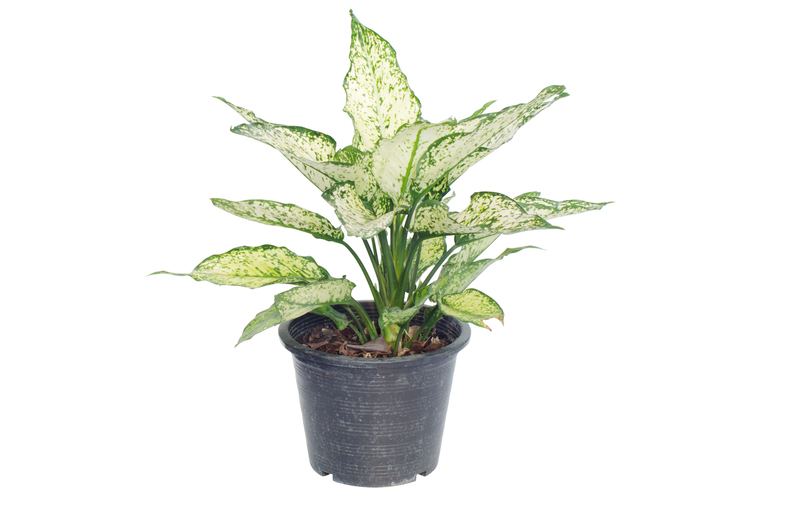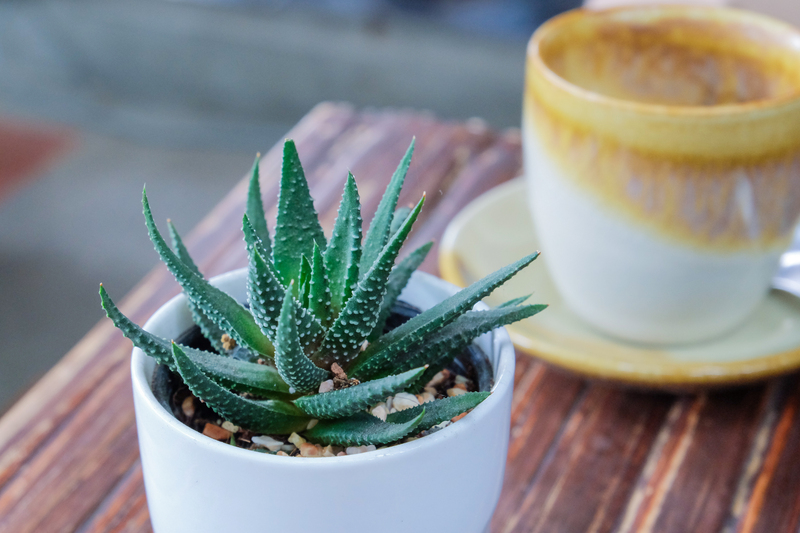Create a sustainable herb garden and enjoy eco-friendly flavor
Posted on 24/05/2025
Create a Sustainable Herb Garden and Enjoy Eco-Friendly Flavor
Have you ever dreamed of plucking fresh basil for your pasta, or snipping fragrant mint for your tea--all without stepping outside your home? You can indulge your culinary senses, live greener, and nurture the planet by starting your very own sustainable herb garden. Let's explore how to create an eco-friendly herb haven, from soil to supper!

Why Choose a Sustainable Herb Garden?
Growing your own herbs offers a feast for both your palate and the planet. Here are some compelling benefits of establishing a green, self-sufficient herb garden:
- Reduces carbon footprint: Cut back on store trips and food miles by growing herbs at home.
- Minimal packaging waste: No more plastic-packaged supermarket herbs!
- Chemical-free: Control growing conditions and avoid pesticides.
- Biodiversity boost: Herbs attract pollinators, supporting local ecosystems.
- Better flavor, fresher food: Homegrown always tastes better and is more nutritious.
Planning Your Eco-Friendly Herb Garden
For a truly sustainable herb garden, thoughtful planning is key. Consider these factors before planting:
- Location: Most culinary herbs love sunlight--choose a spot with at least 6 hours of direct sunlight per day (windowsills, balconies, or sunny corners work well).
- Size: Whether you have a sprawling backyard or a small apartment, you can grow herbs in ground, raised beds, or upcycled containers.
- Water sources: Group herbs with similar water needs to conserve water.
- Herb selection: Start with easy-care favorites like basil, thyme, mint, oregano, chives, rosemary, and parsley.
- Native choices: Incorporate native or drought-tolerant herbs for lower environmental impact.
Container vs. In-Ground Sustainable Herb Gardens
Unsure whether to plant in containers or directly in earth? Here are the pros and cons for each sustainable herb gardening method:
- Containers:
- Pros: Perfect for small spaces and balconies; easy to move; upcycle old crates/buckets for a greener touch.
- Cons: Dry out faster; may need regular feeding.
- In-ground beds:
- Pros: Retain moisture better; support larger plantings.
- Cons: Require healthy, uncontaminated soil.
Eco-Friendly Materials & DIY Garden Ideas
Building your sustainable herb garden doesn't have to use brand-new materials. Get creative! Try these planet-friendly solutions:
- Repurpose old pots, tins, or glass jars as herb planters.
- Use untreated wooden pallets for vertical herb gardens.
- Fashion raised beds from reclaimed bricks or stones.
- Convert old gutters into a sunny herb rail for trailing varieties like thyme or oregano.
Sustainable Soil and Composting Tips
Healthy soil is the heart of every eco-friendly herb garden. Here's how to keep your herbs--and the earth--happy:
- Use organic compost: Rich compost feeds herbs and improves soil structure naturally.
- Make your own compost: Compost kitchen scraps, leaves, and grass clippings to minimize food waste.
- Mulch wisely: Apply straw, leaf litter, or bark mulch to conserve moisture and suppress weeds.
- Avoid peat: Peat harvesting destroys wetlands--choose peat-free compost to protect vital carbon sinks.
Pro Tip: Enrich your soil with worm castings for a nutrient boost that's gentle on the earth and safe for edible herbs!
Water Conservation for Sustainable Herb Gardens
Sustainable herb gardening means making every drop count. Try these water-saving tactics for your eco-friendly garden:
- Harvest rainwater: Use barrels, buckets, or clean containers to collect free, chemical-free water.
- Drip irrigation: Slow, targeted watering reduces runoff and evaporation.
- Use mulch: As mentioned, mulch locks in soil moisture and keeps roots cool.
- Self-watering planters: DIY or purchase pots with water reservoirs for balcony or window gardens.
- Choose drought-hardy herbs: Mediterranean varieties (like rosemary and thyme) thrive with less water.
Natural Pest Control and Companion Planting
Skip harsh chemicals in your sustainable herb garden. Control pests and improve yields with these green solutions:
- Companion planting: Many herbs naturally deter pests. For example, basil repels mosquitoes and flies, while mint keeps ants away.
- Encourage wildlife: Install a bee hotel or birdbath--pollinators love flowering herbs!
- Manual methods: Pick off insects, spray aphids with soapy water, and rotate crops to disrupt pest life cycles.
- Neem oil or homemade sprays: Safe, plant-based repellents keep plants healthy.
Top Herbs for Sustainable, Flavorsome Gardens
Not sure which herbs to start with? Here are some eco-friendly favorites:
- Basil: Fast-growing, pollinator-loving, and endlessly versatile in the kitchen.
- Mint: Hardy, spreads quickly, and survives almost anywhere (best in containers).
- Rosemary: Drought-tolerant, aromatic, perfect for dry or sunny spots.
- Thyme: Low-maintenance, forms fragrant ground cover, and blooms beautifully.
- Chives: Perennial, withstands neglect, and produces edible flowers.
- Parsley: Attracts beneficial insects and packs a nutritional punch.
- Sage: Tough, drought-friendly, and adds complex flavor to many dishes.
- Cilantro/Coriander: Quick to grow, loved in international cuisine.
How to Grow a Sustainable Herb Garden Year-Round
Enjoy fresh, eco-friendly herbs throughout the seasons with these year-round growing tips:
- Indoors: Use windowsills, shelves, or vertical racks with lots of sunlight or LED grow lights.
- Outdoors: Plant in spring after last frost and continue harvesting into fall. Grow in containers for easy relocation indoors during winter.
- Hydroponics: Try water-based growing systems for compact, resource-efficient herb gardens.
- Succession planting: Plant herbs in small batches every few weeks for continuous harvest.
Harvesting and Caring for Herbs Sustainably
Ethical harvesting is crucial in a sustainable herb garden. Here's how to pick for freshness and abundance:
- Never take more than one-third: Allow plants to recover and continue growing.
- Use clean, sharp scissors: Prevent disease transmission.
- Harvest in the morning: Leaves are most flavorful before midday sun.
- Compost trimmings: All herb scraps feed your compost pile for a zero-waste cycle.
Maximizing Flavor: Using Your Homegrown, Sustainable Herbs
The real joy of a sustainable herb garden is savoring superior, eco-friendly flavor in your recipes. Here are quick ideas to enjoy your green harvest:
- Basil: Blitz into pesto, scatter on pizza, or infuse olive oil.
- Mint: Stir into mojitos, blend in smoothies, or brew as tea.
- Rosemary and thyme: Roast with root vegetables, chicken, or add to artisan bread.
- Parsley and chives: Sprinkle over salads, eggs, or mashed potatoes for a fresh finish.
- Sage: Fry leaves for a crispy pasta garnish or swirl into browned butter sauces.
Dry excess herbs on a rack or freeze them in olive oil in ice cube trays to preserve your garden's bounty all year long.
Eco-Friendly Gardening Tips for Sustainability Champions
- Swap seeds and cuttings: Exchange with neighbors to diversify your garden and build community.
- Grow organically: Use only natural fertilizers and pest controls to protect soil health and local watersheds.
- Support pollinators: Allow some herbs (like basil, thyme, or cilantro) to flower.
- Reduce, reuse, recycle: Upcycle containers, tools, and supports.
Small changes in your gardening habits add up to a big difference for our planet!
The Environmental Impact of Sustainable Herb Gardening
Your environmentally friendly herb garden is more than just a culinary treasure--it's a positive force for the planet. Here's why:
- Preserves biodiversity and supports pollinator populations.
- Cuts greenhouse gas emissions by reducing store-bought, packaged herbs.
- Enriches soil, prevents erosion, and builds climate resilience at home.
- Connects you directly to your food source for healthier, more mindful eating.

Common Challenges and Eco Solutions
- Lack of space? Try vertical gardens, wall planters, or hanging baskets.
- Poor soil? Build up with organic matter, compost, and mulch.
- Pests? Focus on companion planting and attract natural predators like ladybugs.
- Limited sunlight? Use reflective surfaces, south-facing windows, or grow lights.
Conclusion: Savor Eco-Friendly Flavor from Your Sustainable Herb Garden
Creating a sustainable, eco-conscious herb garden doesn't just elevate your meals; it improves your wellbeing and impacts the world around you. With careful planning, resourcefulness, and sustainable gardening practices, you can enjoy vibrant, flavorful herbs while modeling environmental stewardship--all from your home or apartment!
Start small, grow green, and let the aroma of your own homegrown, sustainable herbs inspire fresh recipes and an even fresher perspective on eco-living!

